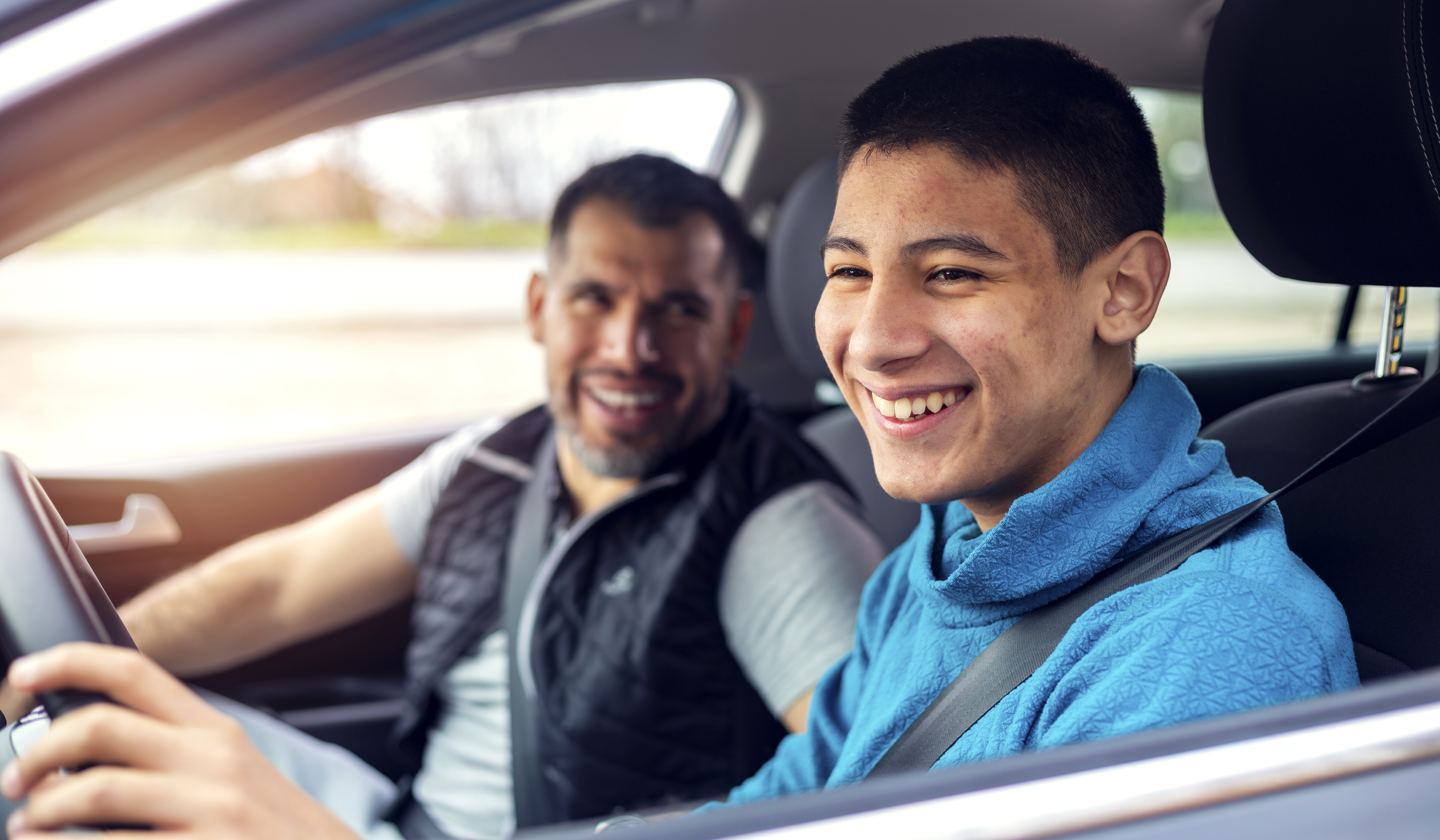Eyes up, phones down: modeling good behavior for teen drivers

Remember the first time you got behind the wheel of a car? Hands at 10 and 2 on the wheel, eyes fixed on the road ahead, all systems checked before you shift out of park...on that day, driving had your full and complete attention. Fast forward to today, when you’re juggling carpool lines, soccer practices across town and constant notifications, and it’s easy to see why distracted driving is a major safety concern.
All of us want to keep our kids safe in the car with us. But for parents of teen drivers, it’s especially important to set a good example and try to limit distractions while you’re on the road. This means—yes, you already know—putting your phone down and silencing notifications while you’re driving. But there are other distractions you may not realize are taking your attention away from safe driving. These include:
- Phone calls (even hands-free) and conversations with passengers.
- Changing the radio, GPS or other features while the car is moving.
- Eating or drinking (hello, hot coffee on your new shirt!)
- Reaching for an item.
- Personal care, like fixing hair or makeup.
While it might feel like you’re just looking away from the road for a quick second, even that small shift in attention can lead to swerving, hard braking, loss of control of the vehicle or hitting another vehicle or pedestrian. You can keep your kids safer in the car with you (and without you, when they are driving independently) by following these suggestions from the Children’s Mercy Center for Childhood Safety:
- Make the driver’s seat a “No Phone Zone.” If you’re using your phone for navigation, set and start the route before you begin to drive.
- Avoid multi-tasking while driving. Our brains are designed to focus on one thing at a time. Studies show that when we think we’re successfully multi-tasking, we’re actually switching back and forth between those tasks and are less effective at all of them.
- Limit the number of passengers, especially for young drivers. Most states have specific guidelines for how many young passengers can ride with intermediate-level teen drivers. Make sure your teen knows the rules and be aware of who they are riding with.
- Keep pets and small children secured in their seats to prevent them from unexpectedly roaming around the vehicle while you’re driving.
- Speak up if you are a passenger and see the driver is distracted by their phone or something else. Thank your kids for calling you out when you are not staying focused on the road!
- Don’t be the distraction. When you’re riding in the car as a passenger, avoid interacting with the driver in a way that takes their focus off the road.
Technology in our vehicles can help us have a more comfortable driving experience, but be sure the screens, buttons and features are not taking your attention away from the road. Teach your teens to park the car if they need to check their phone, adjust the GPS or refine that perfect road trip playlist. Distracted driving is dangerous, but with a few adjustments, we can help keep everyone safer while on the road.

